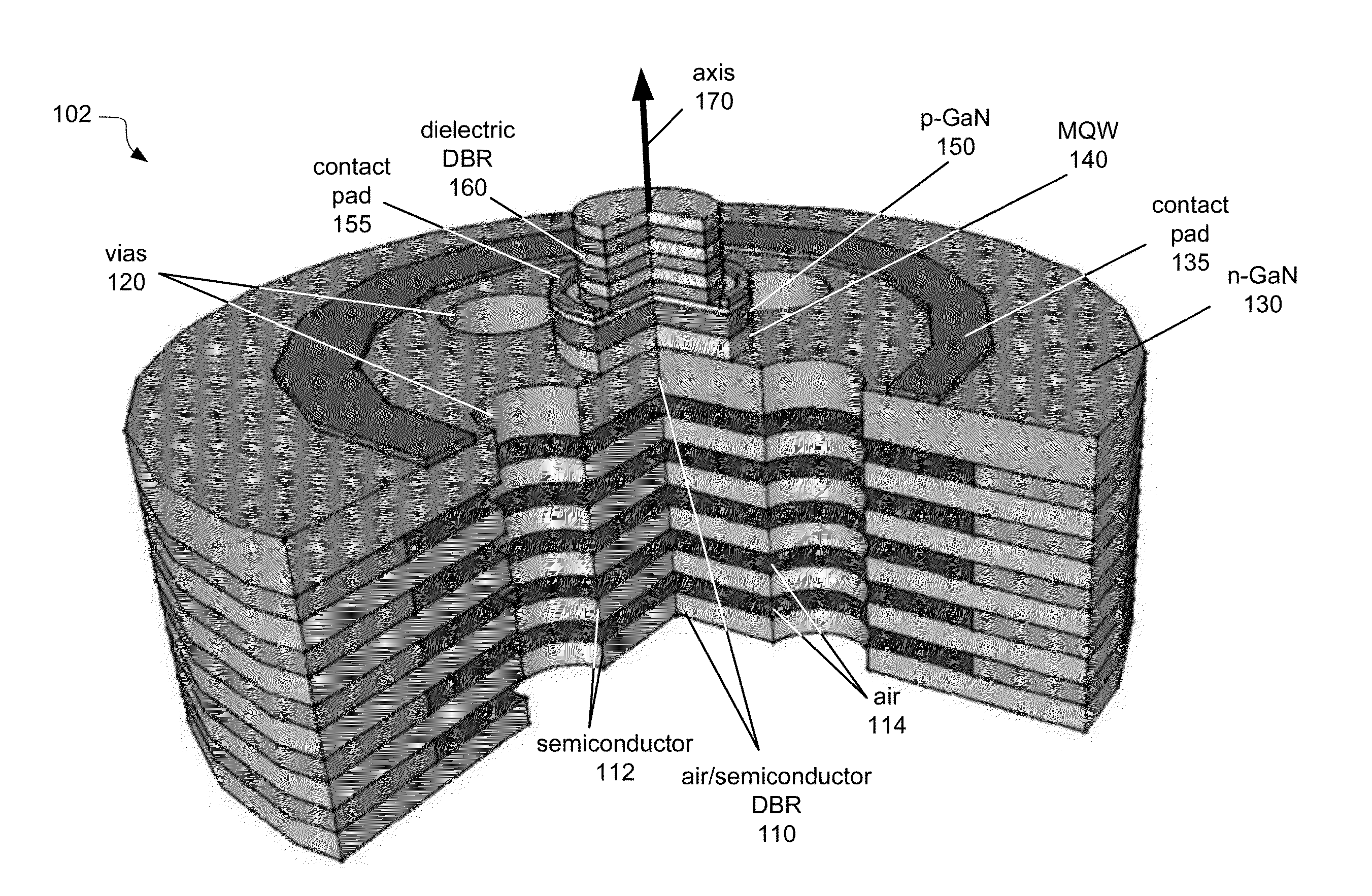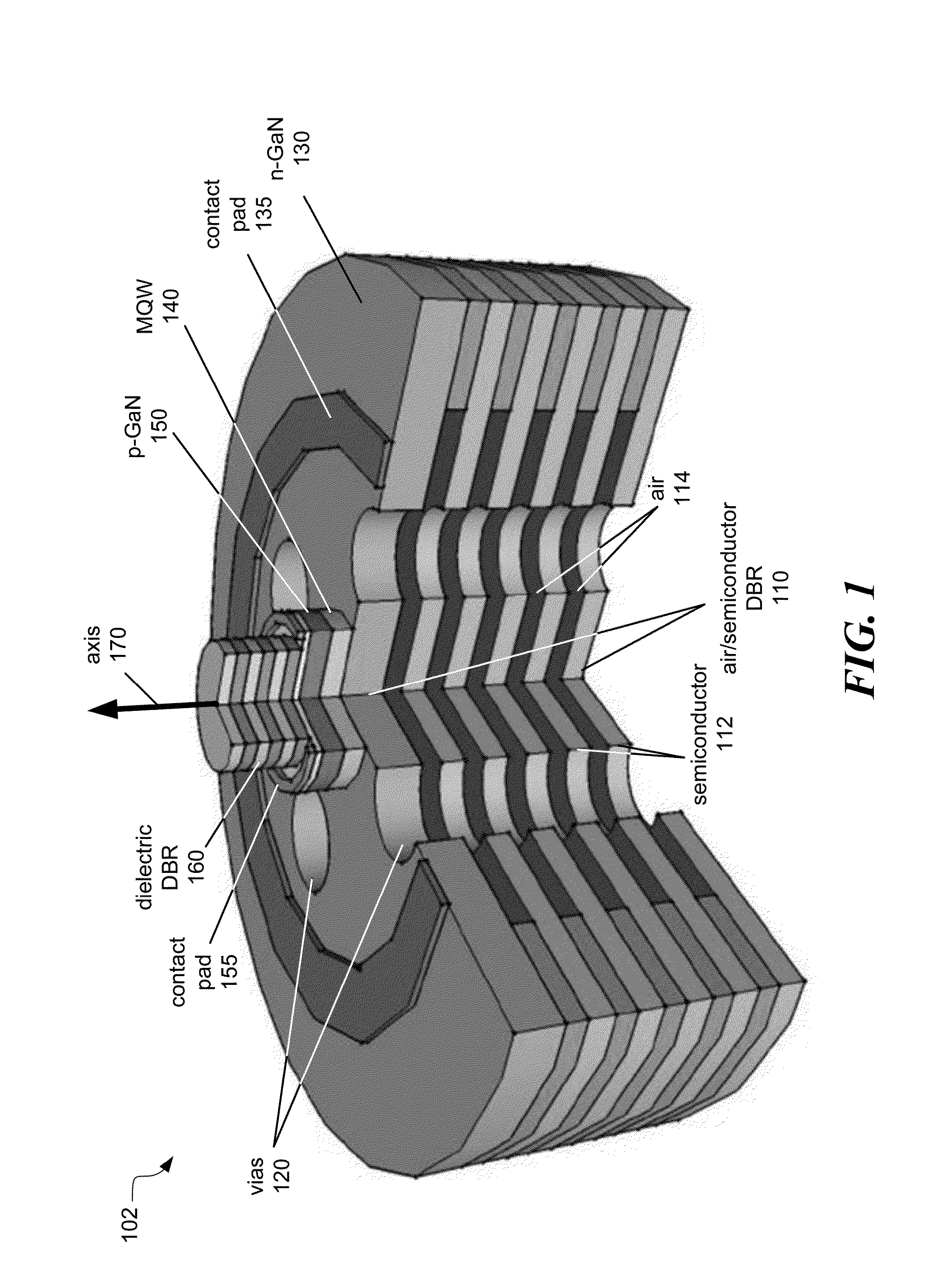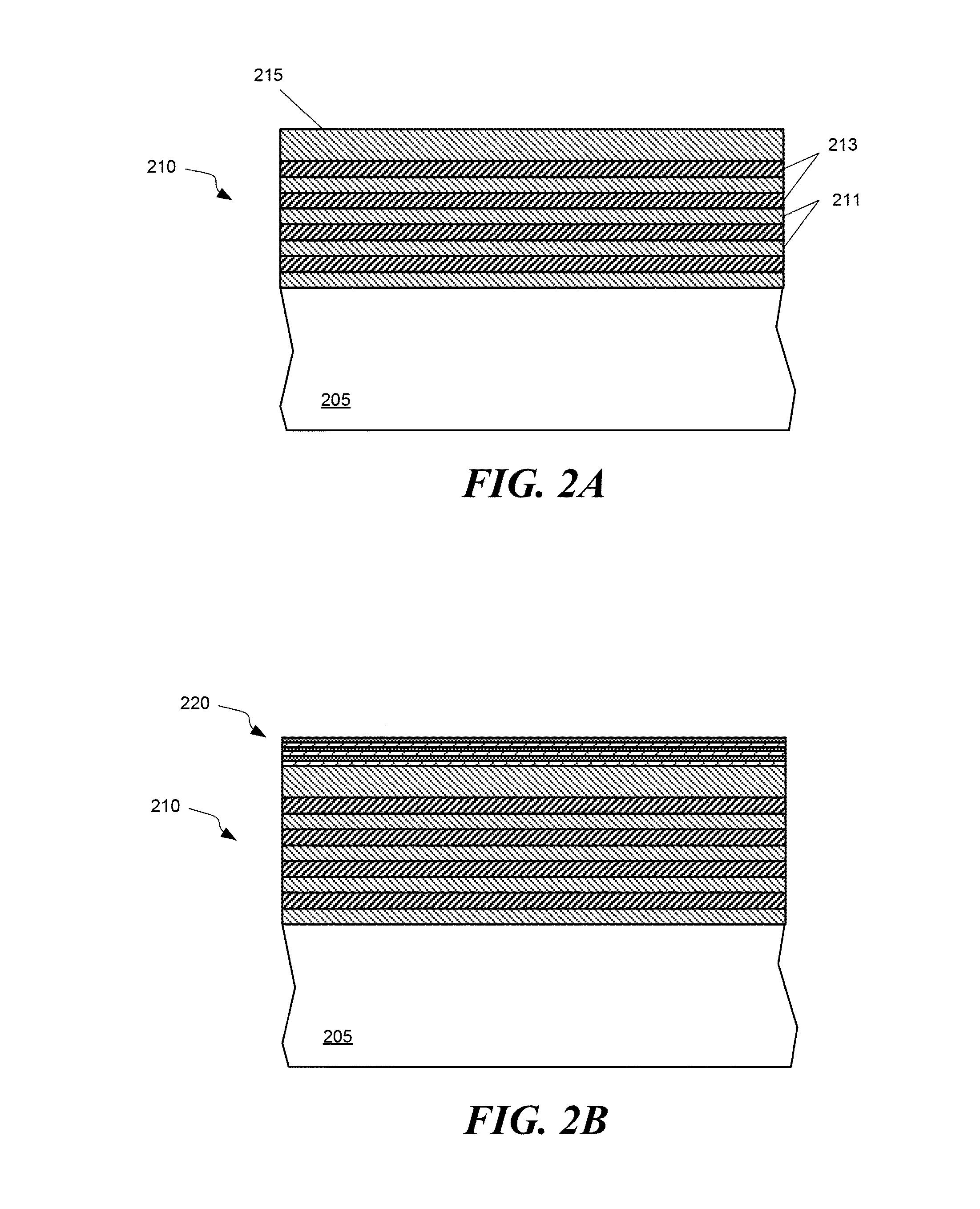Lateral electrochemical etching of iii-nitride materials for microfabrication
a technology of iiinitride and electrochemical etching, which is applied in the direction of lasers, semiconductor lasers, solid-state devices, etc., can solve the problems of difficult to match the cavity mode with the emission wavelength of the active layer, and the structure is difficult to produce, so as to achieve high selective material conductivity
- Summary
- Abstract
- Description
- Claims
- Application Information
AI Technical Summary
Benefits of technology
Problems solved by technology
Method used
Image
Examples
example 1
Controlled Porosification of GaN
[0067]This example describes the use of hydrofluoric acid (HF) as a versatile electrolyte for preparing porous GaN with a wide range of morphology from curved to highly parallel pores. The interplay among different electro-chemical processes may be elucidated using cyclic voltammetry. Under suitable conditions, a record-high rate of porosification (up to 150 μm / min) is observed. The influence of electrolyte concentration, sample conductivity (doping), and anodization potential is investigated. The rich variety of pore morphology can be explained by a depletion-region model where the available current flow pathways in GaN, determined by the ratio of inter-pore spacing and the width of depletion region, define the directions of pore propagation and branching.
[0068]Electrochemical porosification experiments were conducted in a two-electrode cell at room temperature with n-type GaN as the anode and a platinum wire as the counter electrode (cathode). Ga-po...
example 2
Fabrication of a MQW / Air-Semiconductor DBR Structure
[0083]This example describes in further detail the fabrication of a membrane-based GaN / air-gap DBR for blue / green light emitting devices. The formation of membrane DBRs and microcavities may employ electrochemical etching described above in which selective lateral etching of layers is achieved by adjusting the conductivity of layers rather than chemical composition. This can relieve greatly the burden in creating epitaxial DBRs. The lateral-etching process is found to be compatible with InGaN based light emitters.
[0084]The emission of InGaN multiple quantum wells (MQWs) was modified successively with the formation of a DBR underneath the MQW and the capping of the MQW with a silver top mirror. Micro-reflectance measurements of a fabricated DBR structure shows over 98% peak reflectance and a wide stopband (over 150 nm) with only four pairs of GaN / air-gap layers. Micro-photoluminescence spectra of InGaN multiple quantum wells (MQWs) ...
PUM
 Login to View More
Login to View More Abstract
Description
Claims
Application Information
 Login to View More
Login to View More - R&D
- Intellectual Property
- Life Sciences
- Materials
- Tech Scout
- Unparalleled Data Quality
- Higher Quality Content
- 60% Fewer Hallucinations
Browse by: Latest US Patents, China's latest patents, Technical Efficacy Thesaurus, Application Domain, Technology Topic, Popular Technical Reports.
© 2025 PatSnap. All rights reserved.Legal|Privacy policy|Modern Slavery Act Transparency Statement|Sitemap|About US| Contact US: help@patsnap.com



